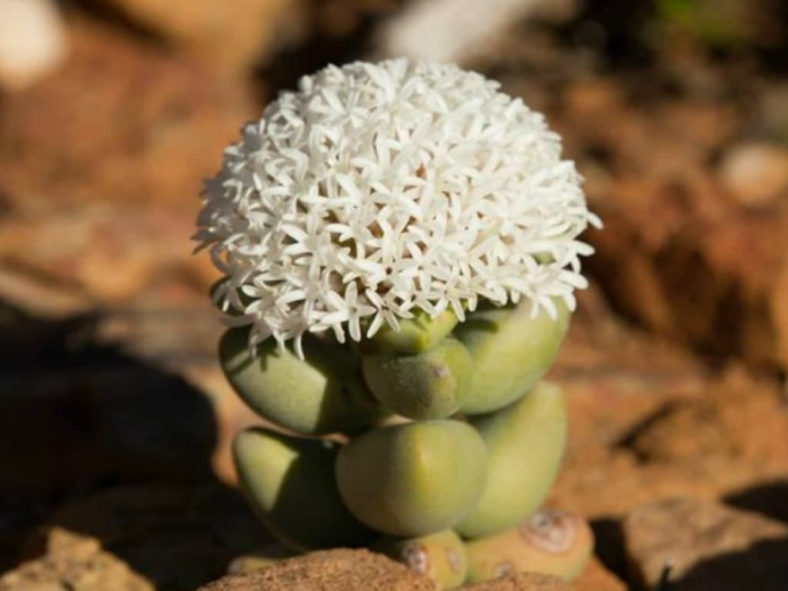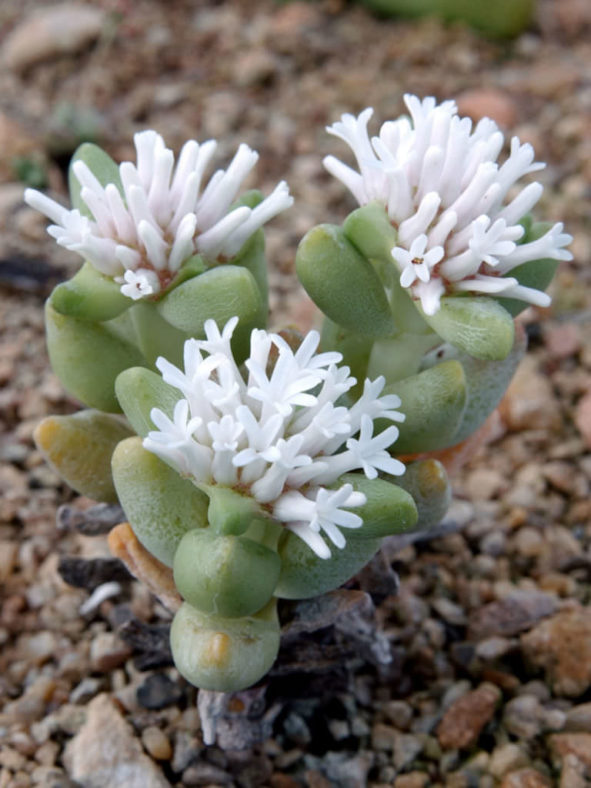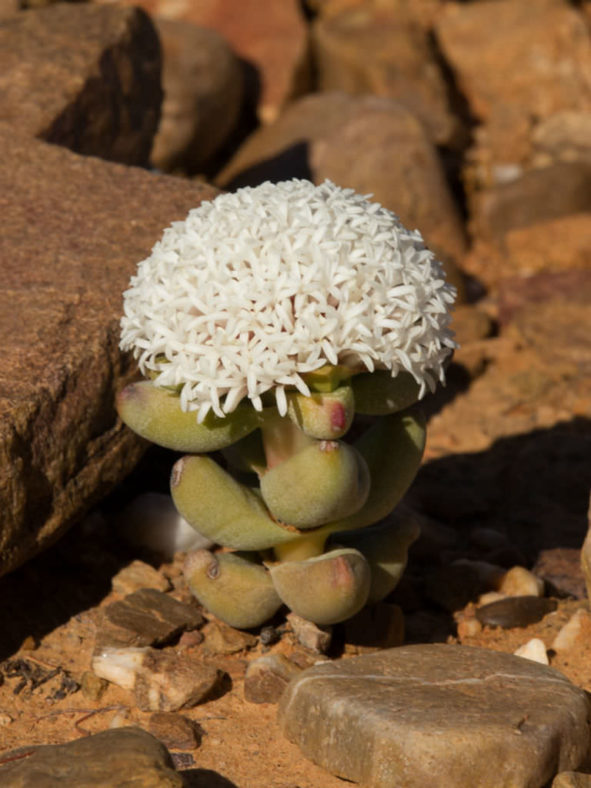Scientific Name
Crassula congesta N.E.Br.
Synonym(s)
Crassula congesta subsp. congesta, Crassula pachyphylla
Scientific Classification
Family: Crassulaceae
Subfamily: Crassuloideae
Genus: Crassula
Etymology
The specific epithet "congesta (pronounced kon-JES-tuh)" means "collected, accumulated; compiled" and refers to the very densely crowded head of flowers.
Origin
Crassula congesta is native to South Africa. It is restricted to the Western Cape from Touwsrivier to Laingsburg and Little Karoo and grows on gravelly flats and gentle slopes on hot northern slopes.
Description
Crassula congesta is a small monocarpic succulent with an erect stem and usually 4 to 5 pairs of leaves. It can grow up to 8 inches (20 cm) tall, usually does not branch, and dies after flowering. The leaves are grey to brown-green and develop a light wax coating when grown in bright light. They are more or less round in cross-section, curved upwards, blunt-tipped, measuring up to 1.2 inches (3 cm) long and 0.5 inches (1.3 cm) wide.
In the late fall, Crassula congesta produces large, rounded heads of hundreds of white, sweetly scented flowers that can grow up to 0.4 inches (1 cm) long.

How to Grow and Care for Crassula congesta
Light: Crassula plants prefer full sun to partial shade. However, intense afternoon sun in the hottest period of summer can burn the leaves of the plants. Most Crassulas can be grown indoors if given enough light.
Soil: They are not particular about soil pH, but Crassulas require very porous soil with excellent drainage.
Hardiness: Crassula congesta can withstand temperatures as low as 30 to 50 °F (-1.1 to 10 °C), USDA hardiness zones 10a to 11b.
Watering: These plants have typical watering needs for succulents. Avoid overwatering using the "soak and dry" method, where the soil is soaked with water, slowly drained, and left to dry out before watering again. Reduce watering in winter.
Fertilizing: Crassulas will benefit from a small amount of organic fertilizer in mid-spring when they start actively growing.
Repotting: Repot as needed, preferably in spring, at the beginning of active growth.
Propagation: Crassulas are generally started by leaves or stem cuttings. They can also be grown from seeds and offsets.
Learn more at How to Grow and Care for Crassula.
Toxicity of Crassula congesta
Crassula plants are generally nontoxic to people and pets.
Subspecies of Crassula congesta
Links
- Back to genus Crassula
- Succupedia: Browse succulents by Scientific Name, Common Name, Genus, Family, USDA Hardiness Zone, Origin, or cacti by Genus
Photo Gallery
Click on a photo to see a larger version.


